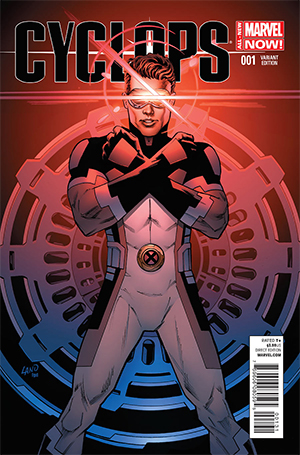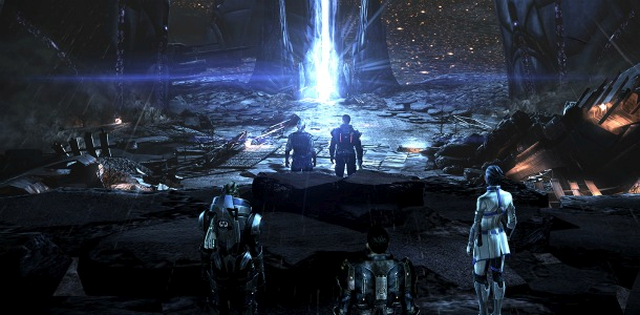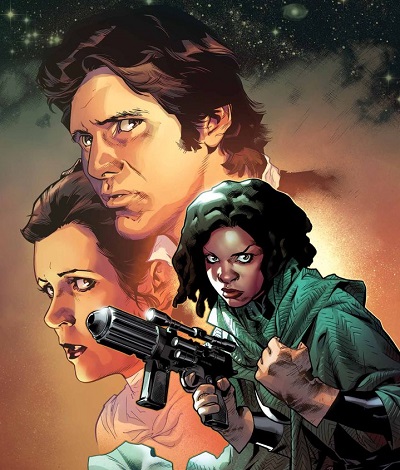![24397040[1]](http://eleven-thirtyeight.com/wp-content/uploads/2015/08/243970401-210x300.jpg) If asked about an “alternate universe Star Wars story,” most people might immediately bring the Star Wars Tales comics to mind. Others might bring to mind the old Infinities comics exploring different takes on the Original Trilogy. A few might think of alternate universe scenarios in video games, such as the dark side endings to various games or The Force Unleashed franchise allowing its pet character Starkiller to kill all of our beloved heroes. A really cheeky person might ask if we meant the Legends Expanded Universe. Alternate universe stories might be common in other franchises – especially comic books – but Star Wars rarely draws from that well, except in fan-created works. Even most Star Wars video games would fall into whatever was the canon continuity at the time. Though the obsession of Star Wars with fitting everything into continuity could be the subject of its own article, it’s still strikingly odd that Star Wars almost never consciously creates alternate universe stories. Taking aside the alternate endings for video games, only Dark Horse committed to alternate universe content in any consistent way. The novels conspicuously never touched it, except for early works of dubious continuity value. (Before anybody asks, no, this is not a “Bring Back Legends” article)
If asked about an “alternate universe Star Wars story,” most people might immediately bring the Star Wars Tales comics to mind. Others might bring to mind the old Infinities comics exploring different takes on the Original Trilogy. A few might think of alternate universe scenarios in video games, such as the dark side endings to various games or The Force Unleashed franchise allowing its pet character Starkiller to kill all of our beloved heroes. A really cheeky person might ask if we meant the Legends Expanded Universe. Alternate universe stories might be common in other franchises – especially comic books – but Star Wars rarely draws from that well, except in fan-created works. Even most Star Wars video games would fall into whatever was the canon continuity at the time. Though the obsession of Star Wars with fitting everything into continuity could be the subject of its own article, it’s still strikingly odd that Star Wars almost never consciously creates alternate universe stories. Taking aside the alternate endings for video games, only Dark Horse committed to alternate universe content in any consistent way. The novels conspicuously never touched it, except for early works of dubious continuity value. (Before anybody asks, no, this is not a “Bring Back Legends” article)
Disney Book Group is doing something rather interesting – they’re publishing a series called A Twisted Tale, which takes their extremely well-known animated features and shooting their stories off in an alternate direction by changing a key fact of the story. It’s a little like Back to the Future II, and if we have to explain that reference to anybody we’re going to be very distressed. Now, this idea is pretty cool not just conceptually, but because Disney is pretty strict about the use of its animated brands on a level fairly comparable to Lucasfilm. So if they’re willing, why not Star Wars?
The first book in the series is called A Whole New World, and it’s an Aladdin alternate universe story by Liz Braswell. It’s a pretty fun story, and so we’ll illustrate what we mean about Star Wars by reviewing this book. It’s a darker and more realistic take on Aladdin, being geared towards young adults who might have grown up on Aladdin (though folks like us who saw it in theatre are decidedly past the young adult stage, at least “young adult” as it’s understood in publishing). The story follows along the movie at first, developing it the way a film novelization might, until the point at which Jafar sends Aladdin to recover the lamp: Jafar betrays Aladdin but manages to keep the lamp, and is able to institute his dark plans far earlier. He becomes a sultan and sorcerer, and Princess Jasmine has to escape and become a revolutionary leader… which is a version of Aladdin we never knew we needed until now. And that’s the beauty of an alternate universe story: it can be more than just a plot twist if it explores different sides of characters or a different type of story.
 We are going to continue our look at representative comics penned by future writers of the Marvel Star Wars comics, trying to examine what makes them a bad or good choice to write Star Wars for the benefit of any readers that may be Star Wars fans but not comic book fans. In the past we’ve looked at
We are going to continue our look at representative comics penned by future writers of the Marvel Star Wars comics, trying to examine what makes them a bad or good choice to write Star Wars for the benefit of any readers that may be Star Wars fans but not comic book fans. In the past we’ve looked at 
 Way back at the beginning of June, issue #6 of Jason Aaron’s Star Wars comic series ended with a bombshell: the apparent bounty hunter tracking Han and Leia for three issues or so finally caught up with them, only to claim that she was Sana Solo, Han’s wife.
Way back at the beginning of June, issue #6 of Jason Aaron’s Star Wars comic series ended with a bombshell: the apparent bounty hunter tracking Han and Leia for three issues or so finally caught up with them, only to claim that she was Sana Solo, Han’s wife.![LeiaAtlas[1]](http://eleven-thirtyeight.com/wp-content/uploads/2015/08/LeiaAtlas1.jpg)
